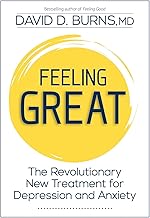
The Laws of Human Nature
Robert Greene, Paul Michael, et al.
4.8 on Amazon
10 HN comments

Lifespan: Why We Age―and Why We Don't Have To
David A. Sinclair PhD and Matthew D. LaPlante
4.6 on Amazon
10 HN comments

Practical Programming for Strength Training
Mark Rippetoe and Andy Baker
4.8 on Amazon
10 HN comments

Awaken the Giant Within : How to Take Immediate Control of Your Mental, Emotional, Physical and Financial Destiny!
Tony Robbins
4.6 on Amazon
10 HN comments

The 4 Hour Body: An Uncommon Guide to Rapid Fat Loss, Incredible Sex and Becoming Superhuman
Timothy Ferriss
4.4 on Amazon
8 HN comments

Humankind: A Hopeful History
Rutger Bregman , Erica Moore, et al.
4.7 on Amazon
8 HN comments

The Art of Fermentation: New York Times Bestseller
Sandor Ellix Katz and Michael Pollan
4.7 on Amazon
8 HN comments

Treat Your Own Back
Robin McKenzie
4.5 on Amazon
8 HN comments

The Art and Science of Low Carbohydrate Living: An Expert Guide to Making the Life-Saving Benefits of Carbohydrate Restriction Sustainable and Enjoyable
Stephen D. Phinney and Jeff S. Volek
4.5 on Amazon
7 HN comments

Feeling Great: The Revolutionary New Treatment for Depression and Anxiety
David D. Burns
4.7 on Amazon
7 HN comments

How Emotions Are Made: The Secret Life of the Brain
Lisa Feldman Barrett, Cassandra Campbell, et al.
4.6 on Amazon
7 HN comments

Originals: How Non-Conformists Move the World
Adam Grant, Fred Sanders, et al.
4.6 on Amazon
6 HN comments

The Plant Paradox: The Hidden Dangers in "Healthy" Foods That Cause Disease and Weight Gain (The Plant Paradox, 1)
Dr. Steven R Gundry MD
4.4 on Amazon
6 HN comments

Psycho-Cybernetics: Updated and Expanded
Maxwell Maltz
4.8 on Amazon
6 HN comments

Salt Sugar Fat: How the Food Giants Hooked Us
Michael Moss
4.6 on Amazon
6 HN comments
tjpickonOct 11, 2010
http://www.amazon.com/Treat-Your-Back-Robin-McKenzie/dp/0958...
icelanceronJuly 5, 2017
ameliusonJuly 26, 2017
[1] Robin A. McKenzie, "Treat Your Own Back".
GusOnTheBusonDec 1, 2016
See the book "Treat your own back"
When I injured my back 20 years ago I found them quite helpful in recuperating.
stephenbezonJuly 17, 2016
How quickly do you increase your training volume? Do you have enough rest and recovery time?
When you first start feeling injured, do you stop, and rest a week or two, or do you continue through the initial pain?
For running, it's commonly known that you shouldn't increase your distance by more than 10% per week. For me, if I find that increasing 10% per week causes injury but if I increase only 6% per week, I'm ok.
Do you warm up and stretch? Do you do strength training or rehabilitation exercises? What about core strength?
I found a great massage therapist who points out issues with my body and recommends stretches to help fix some of them. (I can give you a recommendation if you are in SF)
Are you sure you have the correct form for the exercises? Maybe work with a personal trainer? I biked for years with a bike way too small for me. Only when I went to get my bike fit, and got a different one did pain go away.
Have you read up and gotten a good understanding of your injuries? I was better able to understand and manage some injuries when I read "Treat Your Own Rotator Cuff" and "Treat Your Own Back".
How carefully do you track your exercise? I tracked my exercise for a year and discovered that I was 3x more likely to be injured after any given workout if I had done X minutes of lower body exercise in the past Y days so I cut back and had less injuries.
If you find any good solutions, please respond to the thread and let us know!
GregDavidsononOct 29, 2019
wpietrionMar 13, 2019
My experience with most serious medical things is that doctors have a clear general-audience explanation, because part of their job is making patients feel like they understand what's going on. But if you get into the details, the good doctors will say, "Well, actually, the picture is much murkier, but here's what we know based on studies X, Y, and Z, but there's a lot yet to learn."
Back pain in particular is an area of open dispute. Many people have many theories, all of them very hard to test. When I was dealing with back pain, a spine-center doctor recommended a book called "Treat Your Own Back" [1]. It was hugely helpful to me. And in it, the doctor explains that he hit upon his method because a patient came in, used a piece of equipment that was set up totally the wrong way, and said, "Gosh, doc, that was great!" It led him to reexamine what he had been taught about backs, coming up with a different "clear physical mechanism" to explain a common class of pain.
That we are still figuring something out does not mean it's psychosomatic. It doesn't mean it's not, but a doctor suggesting otherwise is doing the medical equivalent of "god of the gaps" theology, where anything mysterious is attributed to your preferred cause.
[1] https://www.amazon.com/Treat-Your-Back-Robin-McKenzie/dp/095...
jointpdfonJune 28, 2020